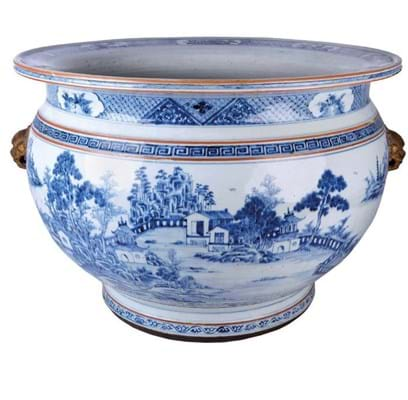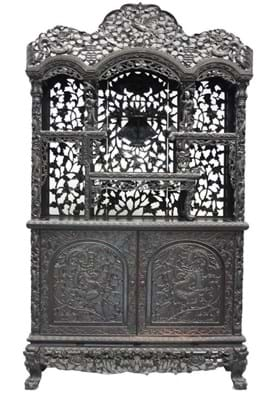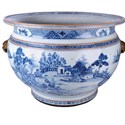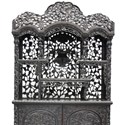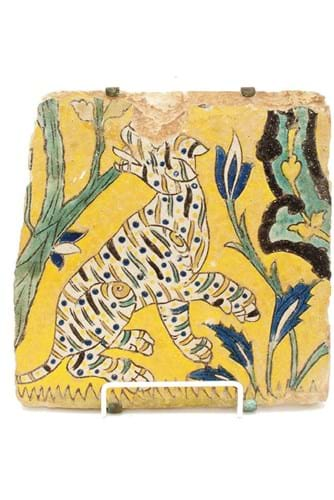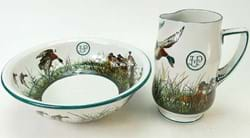Some of the items (26 lots) came from the 1536-acre Penrose Estate at Porthleven – inherited earlier this year by an illegitimate son amid national news.
The sale attracted worldwide interest with the top lot going to a bidder from Vietnam.
This was a typical 23in (58.5cm) diameter Qianlong (1735-96) period porcelain fish bowl with gilt kylin handles. The bowl had some small glaze losses and nibbles beneath the top rim but tripled the top estimate in selling online at £18,000.
An 11in (28cm) tall blue, red and white vase decorated with red dragons amid cloud scrolls and with a Qianlong mark pitched at £5000- 7000 went to China at £6500.
More of a surprise was a near pair of 11½in (29cm) tall Kangxi (1661- 1722) square-section blue and white flasks with blue artemesia leaf marks. With chips and glaze losses down the corners and staining to the glaze, they were pitched at £300-500 but went to the London trade at £3500.
Best of the Chinese furniture was a 19th century ebonised display cabinet which came from a Devon farmhouse.
Standing 6ft 9in (2.95m) tall, the cabinet was carved with a bird, dragons, figures, fruit and vines and may have been made of ebony and, at least partly, of rosewood under the black finish. It quadrupled hopes, going to a Chinese-based UK buyer at £4200.
An unexpected bid brought £3600 (estimate £50-80) for a tray lot that included a carved wood and bamboo model of a shishi.
Catching the eye
Pieces from elsewhere in Asia to catch the eye included a signed Meiji bronze of an eagle, a single Persian tile and paintings of Victorian India.
The perched eagle with 20in (50cm) wide outspread wings sold on the lower £5000 estimate but the 17th century tile from the middle years of the Safavid Empire went way beyond expectations.
Depicting a tiger among foliage on a yellow ground, the 9in (23cm) square tile was pitched at £200- 400 but went to a London dealer at £4100.
The best of three oils of Indian scenes by the American painter Roderick Dempster Mackenzie (1865-1914) sold to the subcontinent.
The 15in x 2ft 2in oil on canvas titled The End of the Durbar – a Scene from North East India showed delegates to the grand meeting seated on the floor looking well wined and watching musicians and dancers.
Despite its obvious echoes of the Raj, it went to India at £4200 (estimate £1000-2000).


